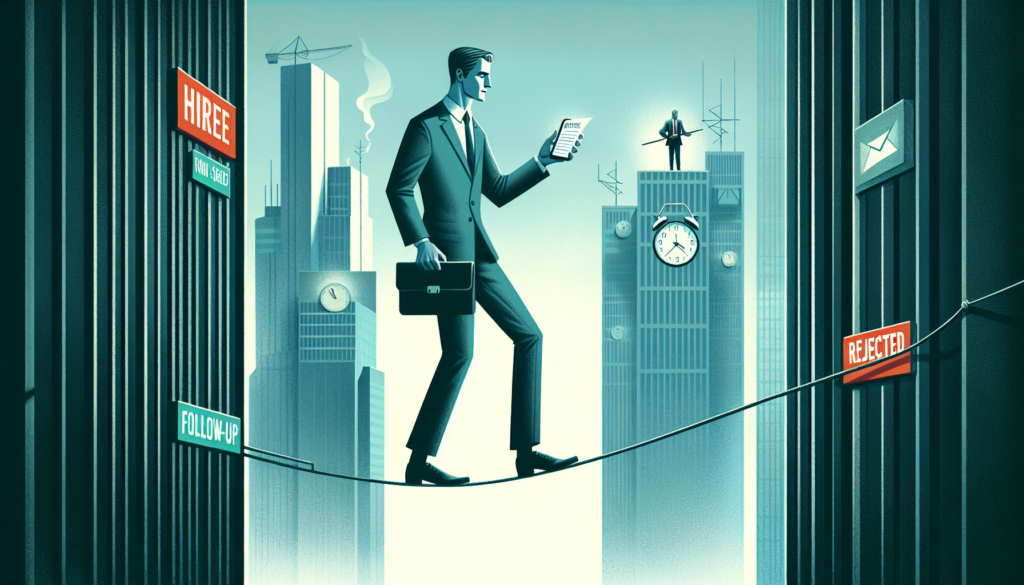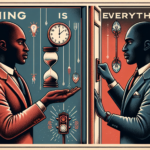The Art of the Follow-Up: Expert Guide to Checking on Your Job Application in 2024 (Without Being Pushy)
Meta: Master the delicate balance of following up on job applications professionally. Learn proven strategies to stay on recruiters’ radar without appearing desperate or pushy.
Did you know that 46% of candidates never hear back about their job applications? Yet, studies show that following up can increase your chances of getting hired by up to 30%! I’ve spent years helping job seekers navigate the delicate dance of the follow-up, and I’m here to tell you – it’s truly an art form. Whether you’re anxiously waiting to hear back about your dream job or managing multiple applications, knowing when and how to check in can make all the difference in your job search journey.

Understanding the Perfect Timing for Follow-Ups
Let’s chat about when to hit that send button on your follow-up message. It’s a bit of an art, really. Generally, you’ll want to wait about a week or two after applying before you reach out. But here’s the thing – job postings can give you some sneaky hints about their timeline.
For example, if they say “immediate start,” you might want to follow up sooner. On the flip side, if they mention a lengthy review process, give it a bit more time. And don’t forget, different industries move at different speeds. Tech companies might get back to you quicker than, say, government jobs.
So, how do you know when it’s okay to check in? Look for signs like missed deadlines they’ve given you or if you’ve had radio silence for longer than they initially suggested. Trust your gut, but don’t be a pest!
Crafting Professional Follow-Up Messages
Now, let’s talk about what to actually say in that follow-up. The key ingredients? A friendly greeting, a reminder of who you are and what position you applied for, a gentle inquiry about the status, and a dash of enthusiasm for the role.
Here’s a quick template you could use:
“Dear [Name],
I hope this email finds you well. I wanted to follow up on the [Job Title] position I applied for on [Date]. I’m still very excited about the opportunity to join [Company Name] and contribute to [specific project or company goal]. I was wondering if you could provide any updates on the status of my application?
Thank you for your time and consideration.
Best regards,
[Your Name]”
For subject lines, keep it simple and clear. Something like “Following up on [Job Title] Application” works well. And remember, keep your tone professional but warm – you want to come across as eager, not desperate.
Multi-Channel Follow-Up Strategies
Email isn’t the only way to follow up. LinkedIn can be a great tool – try connecting with the hiring manager or someone in the department you’re applying to. Just make sure to add a personalized note with your connection request.
If you decide to pick up the phone, have a script ready. Be prepared for voicemail, too. And don’t forget about your network! If you know someone at the company, they might be able to put in a good word or get you some inside info.
When it comes to digital networking, engage with the company’s content on social media. Comment on their posts, share their updates – show that you’re genuinely interested in what they do.
Red Flags and Common Mistakes to Avoid
Alright, let’s talk about what not to do. Following up too frequently is a big no-no. If you’re reaching out more than once a week, you might be crossing into pest territory.
Watch out for signs that you’re being too aggressive. If you’re always the one initiating contact, or if responses are getting shorter and less frequent, it might be time to back off a bit.
Common mistakes? Typos in your emails (always proofread!), being too casual in your tone, or not respecting the timeline they’ve given you. And remember, there comes a point when it’s time to move on. If you’ve followed up a couple of times with no response, it might be time to focus your energy elsewhere.
Following Up After Different Interview Stages
Your follow-up strategy should evolve as you move through the interview process. After applying, a simple check-in email after a week or two is fine. Post-interview, always send a thank you note within 24 hours.
If you make it to a second interview, your follow-up should reference specific points from your conversation. Show that you were paying attention and that you’re excited about the next steps.
In the final stages, it’s okay to be a bit more assertive in your follow-ups. Ask about timelines for decision-making and next steps. This shows you’re serious about the position and helps you manage your own job search process.
Leveraging Technology in Your Follow-Up Strategy
Technology can be your best friend in the follow-up game. Many companies use applicant tracking systems (ATS), so make sure your follow-ups reference the specific job ID if there is one.
Email tracking tools can let you know if and when your email has been opened. This can help you time your follow-ups better. Just don’t mention that you’re tracking emails – it can come off as a bit creepy.
Use your calendar to set reminders for follow-ups. This way, you won’t forget to check in, even if you’re juggling multiple applications.
Lastly, make the most of professional networking platforms. LinkedIn, for example, can be great for staying on a company’s radar. Engage with their content, follow their page, and keep an eye out for any updates about the hiring process.

Conclusion
Remember, following up on your job application is about striking the perfect balance between persistence and professionalism. Use these strategies to stay visible to potential employers while maintaining your dignity and professional reputation. The key is to be proactive but patient, confident but courteous. Now go forth and follow up with purpose!




